Role Artist Name Neil Harbisson | Website Harbisson.com Movement Cyborgism | |
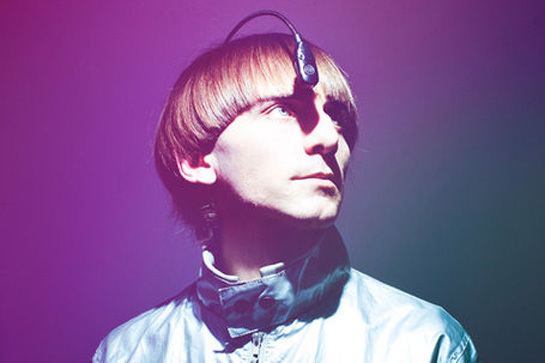 | ||
Born 27 July 1982 (age 43) ( 1982-07-27 ) United Kingdom Known for Contemporary artElectronic Music Notable work Sound Portraits, Colour Concerts, Colour Scores, Capital Colours. Awards 2015 Futurum AwardFuturum, Monaco2014 Bram Stoker Gold MedalTrinity College, Dublin2013 Focus Forward Grand Jury AwardSundance Film Festival, USA2010 Cre@tic Award 2010Tecnocampus Mataro2009 Phonos Music GrantIUA Phonos, Spain2005 Best Performing StoryResearchTV, UK2004 Innovation Award 2004Submerge (Bristol, UK)2004 Europrix Multimedia AwardVienna, Austria2001 & 2010 Stage Creation AwardIMAC Mataro, Spain Similar People Moon Ribas, Kevin Warwick, Stelarc, Steve Mann, Jesse Sullivan | ||
Nationality United KingdomIreland | ||
Neil harbisson i listen to color
Neil Harbisson (born 27 July 1984) is a Catalan-raised, British-born avant-garde artist and cyborg activist based in New York City. He is best known for being the first person in the world with an antenna implanted in his skull and for being officially recognized as a cyborg by a government. His antenna uses audible vibrations in his skull to report information to him. This includes measurements of electromagnetic radiation, phone calls, music, as well as video or images which are translated into sound. His wifi enabled antenna also allows him to receive signals and data from satellites.
Contents
- Neil harbisson i listen to color
- The human eyeborg neil harbisson at tedxgateway
- Early life and career
- 2000s
- 2010s
- Works
- Collaborations
- Media
- References
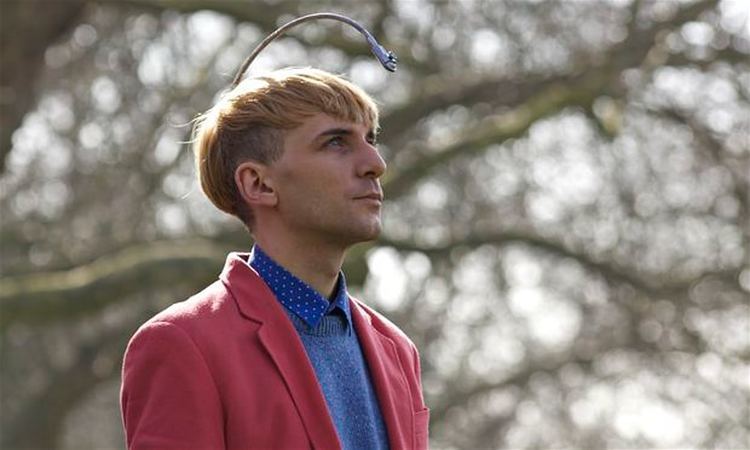
Since 2004, international media has described him as the world's first cyborg or the world's first cyborg artist, for expressing himself artistically through a new sense created by the permanent union between electronic components and his brain. In 2010, he co-founded the Cyborg Foundation, an international organisation that defends cyborg rights, promotes cyborgism as an art movement and supports people who want to become cyborgs.
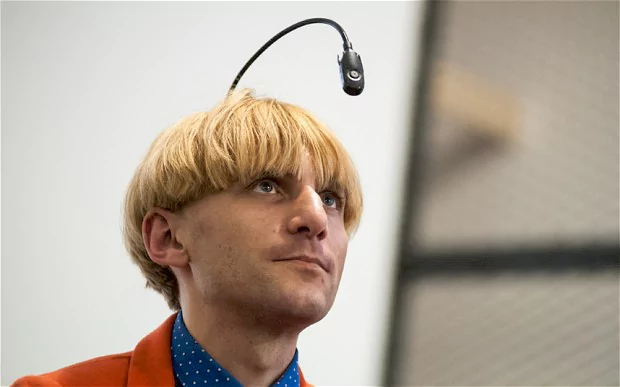
Harbisson became one of the 2018 Guinness Book Record Holders in September 2017, for his implanted antenna.
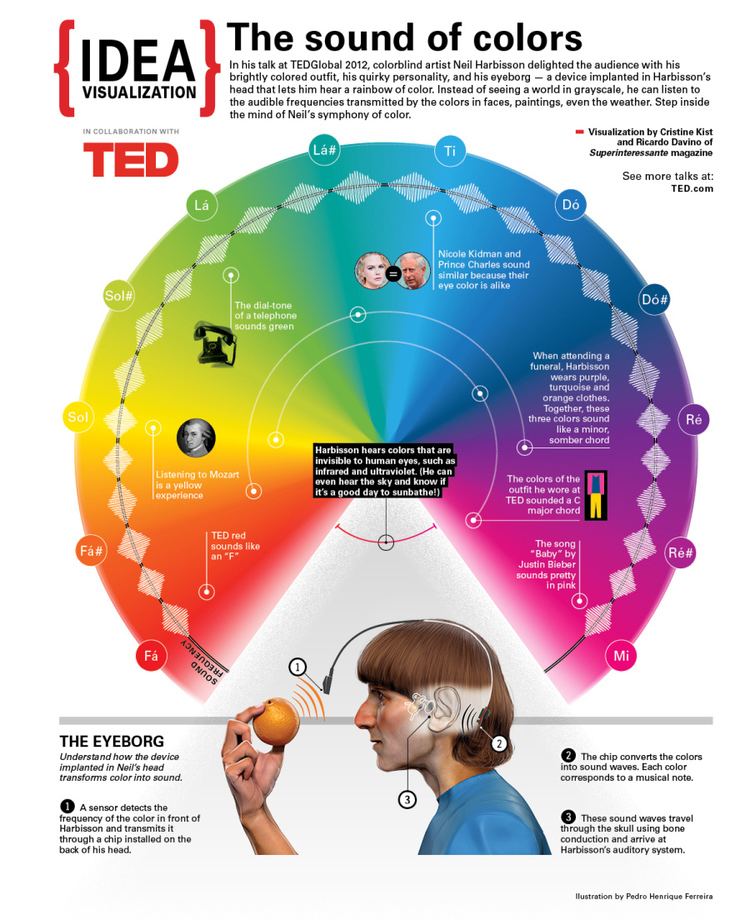
The human eyeborg neil harbisson at tedxgateway
Early life and career
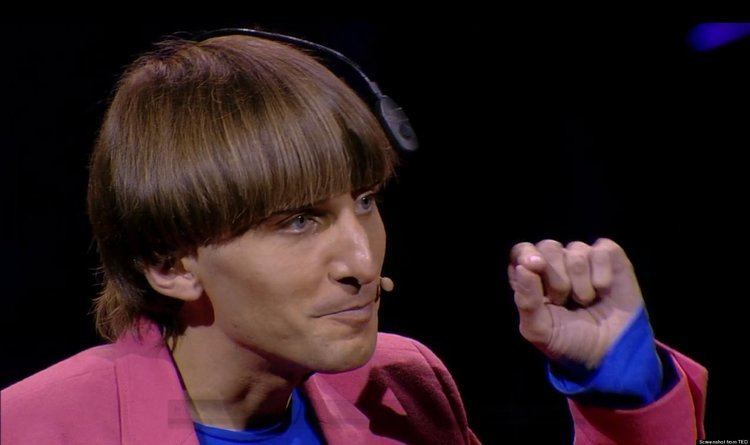
Harbisson is the son of a Catalan mother and a Northern Irish father. He was born with an extreme form of colour blindness that results in his seeing in grayscale. He grew up in Mataró in Catalonia, Spain, where he studied music and art at various schools. He began to compose piano pieces at the age of 11 and, at 16, began studying fine art at the Institut Alexandre Satorras, where he was given special permission to use no colour in his work. His early works are all in black and white and these were the only colours he used to wear.
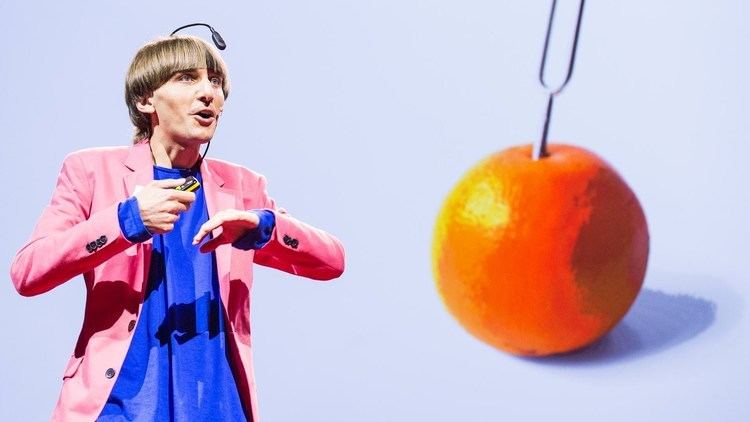
At the age of 18, Harbisson climbed a tree in Mataró to save three trees from being felled. He lived in the tree for several days, supported by over 3,000 people who signed a petition to maintain the trees. After days of protest, the city hall announced the trees would not be cut. At the age of 19, he moved to England to study music composition at Dartington College of Arts.
2000s
Cyborg Antenna: In 2003 Harbisson started a project at Dartington College of Arts with Adam Montandon to develop a sensor that transposed colour frequencies into sound frequencies. Neil memorised the sound of each colour and decided to permanently attach the sensor to his head. Peter Kese, upgraded the sensor to 360 microtones and added volume levels depending on colour saturation levels and Matias Lizana, developed the sensor's software into a smaller chip. The antenna implant was rejected by bioethical committees which is why the surgery went underway by anonymous doctors. Harbisson's antenna, which has been permanently attached to his head since 2004, is osseointegrated inside his skull and sprouts from within his occipital bone. It allows him to hear the light frequencies of the spectrum including invisible colours such as infrared and ultraviolet. The antenna consists of two antenna implants, one vibration/sound implant, and a Bluetooth implant that allows him to connect to the internet and therefore receive colours from satellites and other people's cameras, as well as receive phone calls directly into his skull.
Cyborg passport: In 2004, Harbisson was not allowed to renew his UK passport because his passport photo was rejected. The UK Passport Office would not allow Harbisson to appear with electronic equipment on his head. Harbisson wrote back insisting that the antenna should be considered part of his body as he had become a cyborg. Letters from his doctor, friends and his college were sent to the passport office to give him support. After weeks of correspondence Harbisson's antenna was included. Harbisson states that he became a cyborg when the union between his organism and his antenna created a new sense.
2010s
Use of the internet as a sense: Harbisson has given permission to 5 of his friends, one in each continent, to send colours, images, videos or sounds directly into his head. If he receives colours while asleep his friends can colour and alter his dreams. The first public demonstration of a skull transmitted image, a selfie sent from New York by model Isaac Dean Weber, was broadcast live on Al Jazeera's chat show The Stream. The first person to make a phone call directly into his skull was Ruby Wax.
In 2014, Harbisson executed the world’s first skull-transmitted painting Skyped from audience members in Times Square as they painted simple colored stripes onto a canvas. The color frequencies of the painted surface were received live via internet directly into Harbisson's brain. He correctly identified and painted the same color stripes onto a different canvas in front of an audience at The Red Door, 10 blocks away from Times Square.
Physical aggressions: In 2011 the antenna was damaged by police who believed that Harbisson had been filming them during a demonstration in Plaça de Catalunya, Barcelona. Harbisson filed a complaint of physical aggression, as he considers the antenna to be a body part.
Works
Harbisson's art work has been ranked together with the works of Yoko Ono and Marina Abramovic as one of the 10 most shocking art performances ever. His work is focused on the creation of new senses and the creation of external art works through these new senses. His main works have been exhibited during the 54th Venice Biennale at Palazzo Foscari (Giudecca 795), Savina Museum of Contemporary Art (Seoul), Museumsquartier (Vienna), CCCB (Barcelona), Bankside Gallery (London), Pioneer Works (New York City), Royal College of Art Gallery (London), Centre d'Art Santa Mònica (Barcelona), Pollock Gallery (Dallas), and at the American Visionary Art Museum (Baltimore), among others.
Collaborations
Harbisson is in the cast of Adam Green's Aladdin, an independent film directed by Adam Green and starred by Macaulay Culkin, Natasha Lyonne, Alia Shawkat and Francesco Clemente among others.
Harbisson has collaborated extensively with Spanish choreographer Moon Ribas in a series of devised theatre and dance performances such as Opus No.1, premiered at London's BAC Theatre, The Sound of the Orange Tree, premiered at Barcelona's Antic Teatre and Walking Colours.
Harbisson's first colour-to-voice performances were in collaboration with Icelandic musician María Huld Markan Sigfúsdóttir. In their performances, María used a computer to hear and sing the colour frequencies that Harbisson used while creating live paintings on stage.
Harbisson has collaborated and performed with Spanish musician Pau Riba with whom he shares the same interest in cyborgs. They first performed at Sala Luz de Gas (Barcelona), followed by other performances. One of their projects is Avigram, a structure of 12 strings, one string for each semitone in an octave, installed on a roof of a farm. The installation is recorded 24 hours a day and a melody is being created depending on which strings birds decide to rest on.
Media
Harbisson has contributed significantly to the public awareness of cyborgs, transpecies, artificial senses and human evolution by giving regular public lectures at universities, conferences and LAN parties sometimes to an audience of thousands. He has taken part in science, music, fashion and art festivals such as the British Science Festival, TEDGlobal, London Fashion Week, Sónar, and NeoTokyo Festival among others. He has become trending topic on Twitter in several occasions. He has appeared on TV documentaries such as Daily Planet by Discovery Channel, Documentos TV, Redes; and in specific documentaries about his life such as La importància dels colors, and El Ciborg dels Colors, as well as on a number of chat shows including NBC's Last Call with Carson Daly, Richard & Judy, Buenafuente, Fantástico and on the Belgian comedy show Scheire en de Schepping. He has taken part in radio programmes on New York's Public Radio International, BBC World Service, Cadena SER, and has contributed in newspapers and magazines such as The New York Times, The New Scientist, Wired, The Scientist,The Red Bulletin, Modern Painters, ¡Hola!, and Muy Interesante.
In 2013, Cyborg Foundation a short documentary film about Neil Harbisson and the Cyborg Foundation, won the Grand Jury Prize at the Sundance Film Festival's Focus Forward Filmmakers Competition. Since 2014, The Sound of Colours a short film about Harbisson's life, is being filmed. In 2015, Hearing Colors, a black and white documentary about Harbisson in New York was chosen as a Vimeo "Staff Pick" and became the 2016 winner of New York's Tribeca Film Festival X Award.
